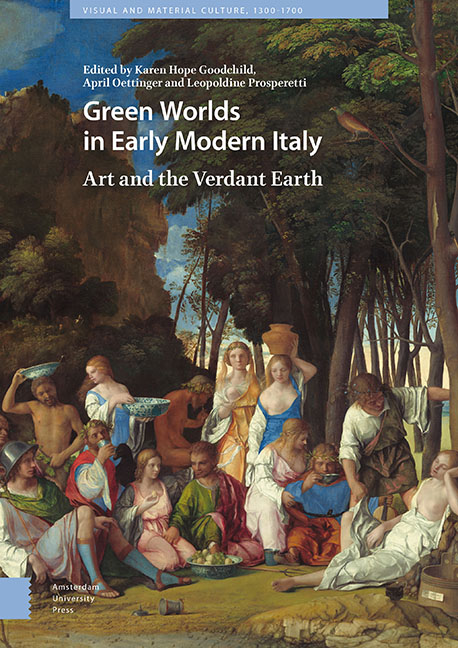Book contents
5 - Naturalism and Antiquity, Redefined, in Vasari's Verzure
Published online by Cambridge University Press: 21 November 2020
Summary
Abstract
Bringing green nature indoors had been an Italian domestic habit since the Middle Ages, but, as the real gardens outside of villas and palaces became more complex, erudite and splendid, so did the painted green architecture gracing palace interiors. This essay offers a careful reading of Lives of the Artists to show how Vasari understood such refined decorative programs. Tracing Vasari's very particular use of the word verzure, a term Vasari uses only in the second edition of his book and only in reference to trained plant structures, either painted or real, the essay examines Vasari's thoughts on the best way to deploy fictive green architecture in interiors and also which artists he believed had the appropriate skills for this task.
Keywords: green architecture, garlands, Giorgio Vasari, Titian (Tiziano Vecellio), verdure, renaissance gardens, Raphael, Giovanni da Udine, pergola, ornament
Ephemeral Courtly Verzure
In a letter to Pietro Aretino, 25 year old Giorgio Vasari records a charming anecdote about verdure. Vasari claims that he worked many days preparing ornaments for Florence's welcome of Emperor Charles in 1536, proceeding almost unaided because local artists were leery of helping an interloper from Arezzo. Ultimately, on the morning of the entry, Vasari collapsed ‘for very weariness on a bundle of verdure intended for the decorations’. The story has a happy – and self-aggrandizing – ending. Duke Alessandro, taking a last minute tour of the festal ephemera, has Vasari roused from his green pillow and tells him, ‘Giorgio mine, this work of yours is larger, more beautiful, better executed, and more speedily finished than that of anybody else’.
Although Vasari writes this story to demonstrate his early promise as an impresario, an organizer of court events, for our purposes it brings to the fore an essential use of verzure in Renaissance arts: festal greenery. Throughout his career, such verdure continued to occupy Vasari. We have a 1565 notation of expenditures for some decorations overseen by Vasari for the Palazzo Vecchio courtyard recorded as ‘terra cotta putti heads interspersed with ram and lion heads made of paper-mache, all hung with festonj di verzura’. As with many such ephemeral decorations, this grouping was partly made of actual plant matter, but included non-organic materials as well, and featured delights like exotic beasts and mythic creatures.
- Type
- Chapter
- Information
- Green Worlds in Early Modern ItalyArt and the Verdant Earth, pp. 109 - 130Publisher: Amsterdam University PressPrint publication year: 2019

